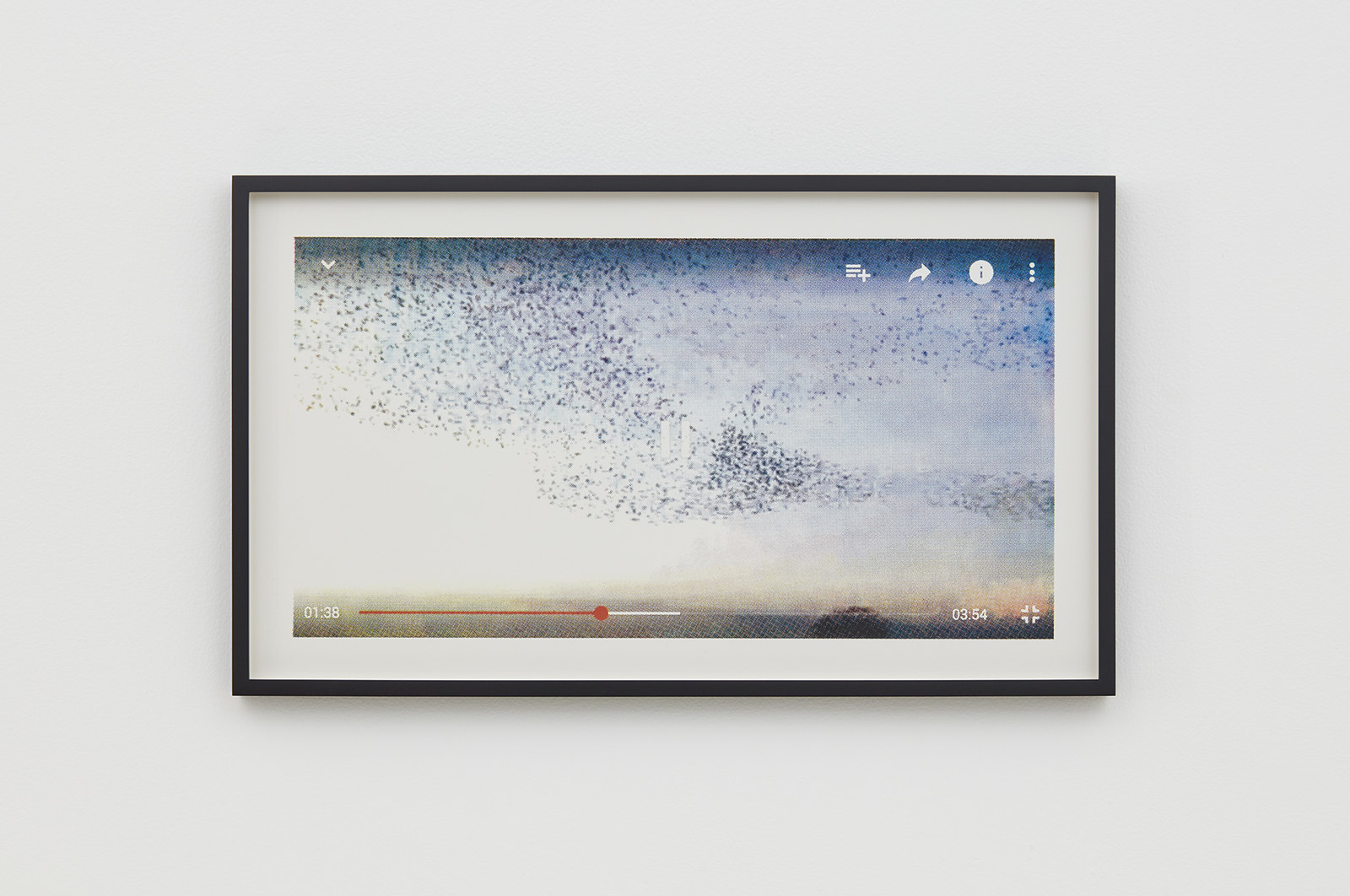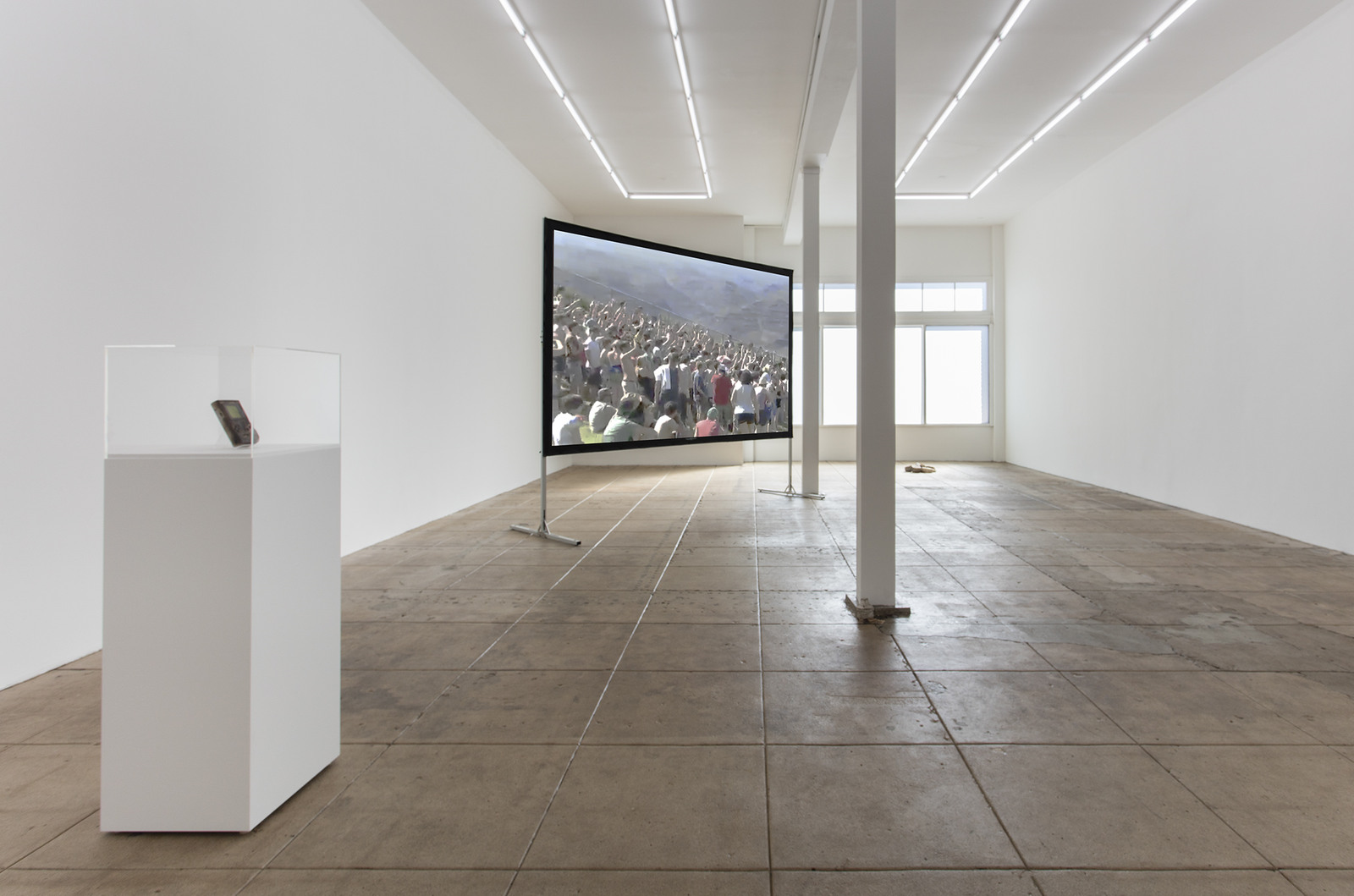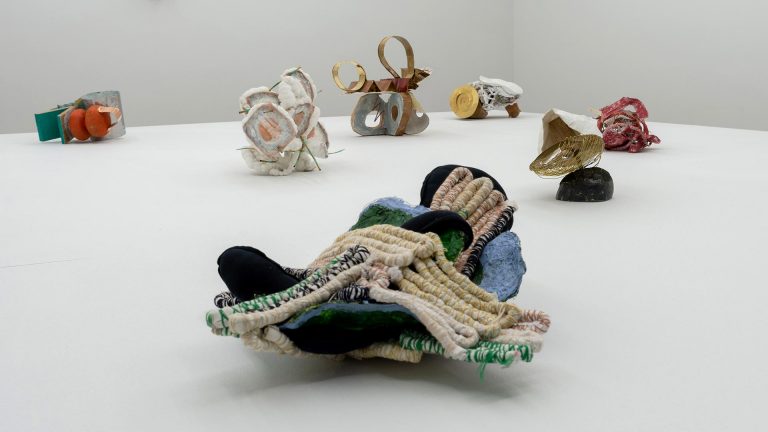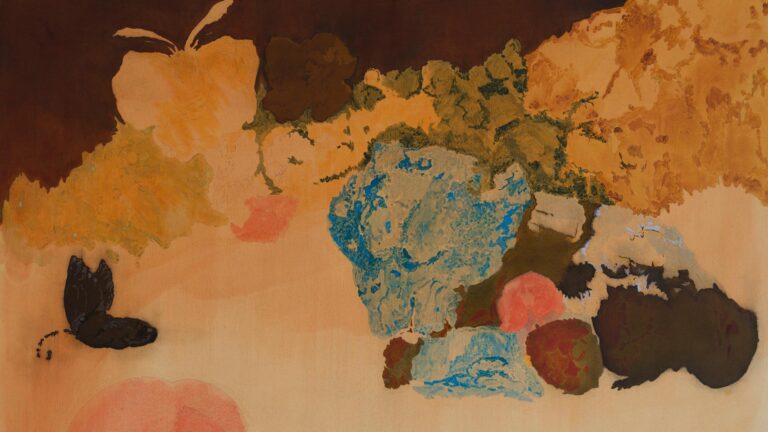Artist: Oliver Payne
Exhibition title: Seven Objects
Venue: Overduin & Co., Los Angeles, US
Date: November 4 – December 31, 2016
Photography: all images copyright and courtesy of the artist and Overduin & Co.
Overduin & Co. is pleased to present “Seven Objects,” a solo exhibition by Oliver Payne.
George A. Miller was one of the founders of the cognitive psychology field. He authored one of the most widely cited papers in psychology, “The Magical Number Seven, Plus or Minus Two” in 1955. It is often interpreted as arguing that the number of objects an average human can hold in working memory is plus or minus seven. This is frequently referred to as Miller’s Law. Miller writes.
“And finally, what about the magical number seven? What about the seven wonders of the world, the seven seas, the seven deadly sins, the seven daughters of Atlas in the Pleiades, the seven ages of man, the seven levels of hell, the seven primary colors, the seven notes of the musical scale, and the seven days of the week? What about the seven-point rating scale, the seven categories for absolute judgment, the seven objects in the span of attention, and the seven digits in the span of immediate memory? For the present I propose to withhold judgment. Perhaps there is something deep and profound behind all these sevens, something just calling out for us to discover it. But I suspect that it is only a pernicious, Pythagorean coincidence.”
The seven works in the show are as follows:
1. A jar of jelly beans
A simple experiment: guess the number of jelly beans. Everyone gets it wrong but collectively they can get it right. The average taken from the sum of all guesses divided by the number of guesses will be within 1 or 2 of the actual number of jelly beans. The same algorithm used by Google, Amazon, Netflix, etc.
2. A still from a viral YouTube video of the largest documented starling migration
The YouTube video documenting the enormous swarm of birds went viral a few years ago. It has only recently been discovered that each bird only needs to follow the movements of its seven closest
neighbors in order for the flock to fly en masse without colliding. Neil Stephenson uses a very similar idea for a computer program called the Parambulator in his book Seveneves. Essentially it can fly a very large number of space craft remotely without any of them crashing into each other.
3. The Ambassadors skull on a mirror
A mirror in the dimensions of Holbein the Younger’s masterpiece, The Ambassadors, is adorned with the rendering of a human skull. The skull moves from distortion to trompe l’oeil realism depending on the angle from which it is viewed. The work is seeing the skull in front of your own reflection, or perhaps the real work is the selfies that people will take in front of it. The title references a quote, “you are nothing more than the image others have made of you” from Rainer Werner Fassbinder’s 1973 science fiction film, World on a Wire. The film is about the study of virtual environments and the possibility that what we think is the real world may in fact be someone else’s simulation.
4. Finger prints on Perspex
1234. The artist’s signature as the residue of the most commonly entered passcode on an Apple device. The Perspex surface is scaled to the size of an iPad screen. There are 10,000 possible combinations from the keypad. A number about a number. Entered through muscle memory, without thinking, so it becomes a movement or shape rather than a number. The same sideways L-shape formed by the movement of is likely repeated across millions of devices each day.
5. Replica of bombed Game Boy playing Tetris
A replica of a Game Boy that is on display at the Nintendo museum in New York. The Game Boy belonged to a soldier in the first Gulf War and was retrieved from his barracks after a bombing. The Game Boy survived the explosion and still functioned perfectly. Tetris features seven interlocking geometric pieces. The game was invented by a Russian game designer, Alexey Pajitnov, in 1984 and initial licensing rights were owned by the Soviet Union. In 1989, the rights were sold to Nintendo in a landmark deal that symbolized the perestroika era and was endorsed by Gorbachev himself. A Japanese device, playing a Russian game, found in the Middle East, belonging to an American soldier.
6. One Man Rave
A viral video pulled directly from YouTube projected onto a large freestanding screen. The 3 minute clip is titled “guy starts dance party” and has over 14 million views to date. It was filmed by a concert-goer at the Sasquatch music festival in Washington. The video documents a man at the festival dancing alone on a grassy hill. He is filmed from afar via a camera phone. Soon he is joined by a dancing stranger, and then a third man joins in. Very quickly and without words the crowd grows. People begin sprinting to join what has become an enormous mass of people dancing. The exponential growth of the dancing crowd mirrors the online engagement of the public with its documentation.
7. Campfire
The remains of a campfire extracted from its original site and transferred to the gallery. As the seventh and last object, this artwork signals an endpoint within the exhibition. A campfire is a gathering point; a place for recollections to be shared and stories to be told. It is a resting point in the great outdoors, and in the case of its counterpart in the video game world, it commonly functions as the “save point.” You’ve gone as far as you can for now. Time to save.
Oliver Payne (b. 1977, London) lives and works in Los Angeles, CA. He failed his BFA from Kingston University of Fine Art in London. Recent exhibitions have been organized at Gavin Brown’s Enterprise in New York, Herald St in London, Federico Vavassori in Milan, Nanzuka Underground in Tokyo, Aishonanzuka in Hong Kong, and 356 Mission in Los Angeles. In collaboration with Nick Relph, his work has been exhibited internationally at the Serpentine Gallery in London, Kunsthalle Zurich, the National Museum of Contemporary Art in Oslo, MoMA PS1 in New York, the Institute of Contemporary Art in London, and the Museum of Modern Art in New York. Payne received the Golden Lion award at the 43rd edition of the Venice Biennale for his work with Relph. Recently, Payne has hosted Chill Out performances in Los Angeles, Rome, and Gothenburg, Sweden. During the performances, participants are asked to turn off their mobile internet devices, relax, and listen to the album “Chill Out” by late-80s British band KLF. Payne’s work is included in the permanent collections of the Tate Britain in London, the Museum of Modern Art in New York, Centre Georges Pompidou in Paris, and the National Museum of Contemporary Art in Oslo.
Oliver Payne, Untitled (the Wisdom of Crowds), 2016, jellybeans in glass jar, 10 x 7 3/8 x 7 3/8 in / 25.4 x 18.7 x 18.7 cm
Oliver Payne, Untitled (Holbein’s Skull / You are nothing more than the image others have made of you pt. 2), 2016, ink on mirror, 82 1/2 x 81 1/2 x 1/4 in / 209.6 x 207 x .6 cm
Oliver Payne, Untitled (Viral Murmuration video), 2016, 4 color screen print, 15 3/4 x 26 3/4 in / 40 x 67.9 cm
Oliver Payne, Untitled (Replica of Game Boy Damaged in the Gulf War), 2016, game boy, 5 3/4 x 3 1/2 x 1 1/4 in / 14.6 x 8.9 x 3.2 cm
Oliver Payne, Untitled (Replica of Game Boy Damaged in the Gulf War), 2016, game boy, 5 3/4 x 3 1/2 x 1 1/4 in / 14.6 x 8.9 x 3.2 cm
Oliver Payne, Untitled (1, 2, 3, 4), 2016, solvent ink on plexiglass, 10 1/2 x 7 3/4 x 1 in / 26.7 x 19.6 x 2.5 cm
Oliver Payne, Untitled (One Man Rave), 2016, digital video clip, 6 minutes, 11 second loop
Oliver Payne, Untitled (Save Point), 2016, stones, wood, ash, 4 1/2 x 20 x 21 in / 11.4 x 50.8 x 53.3 cm




























